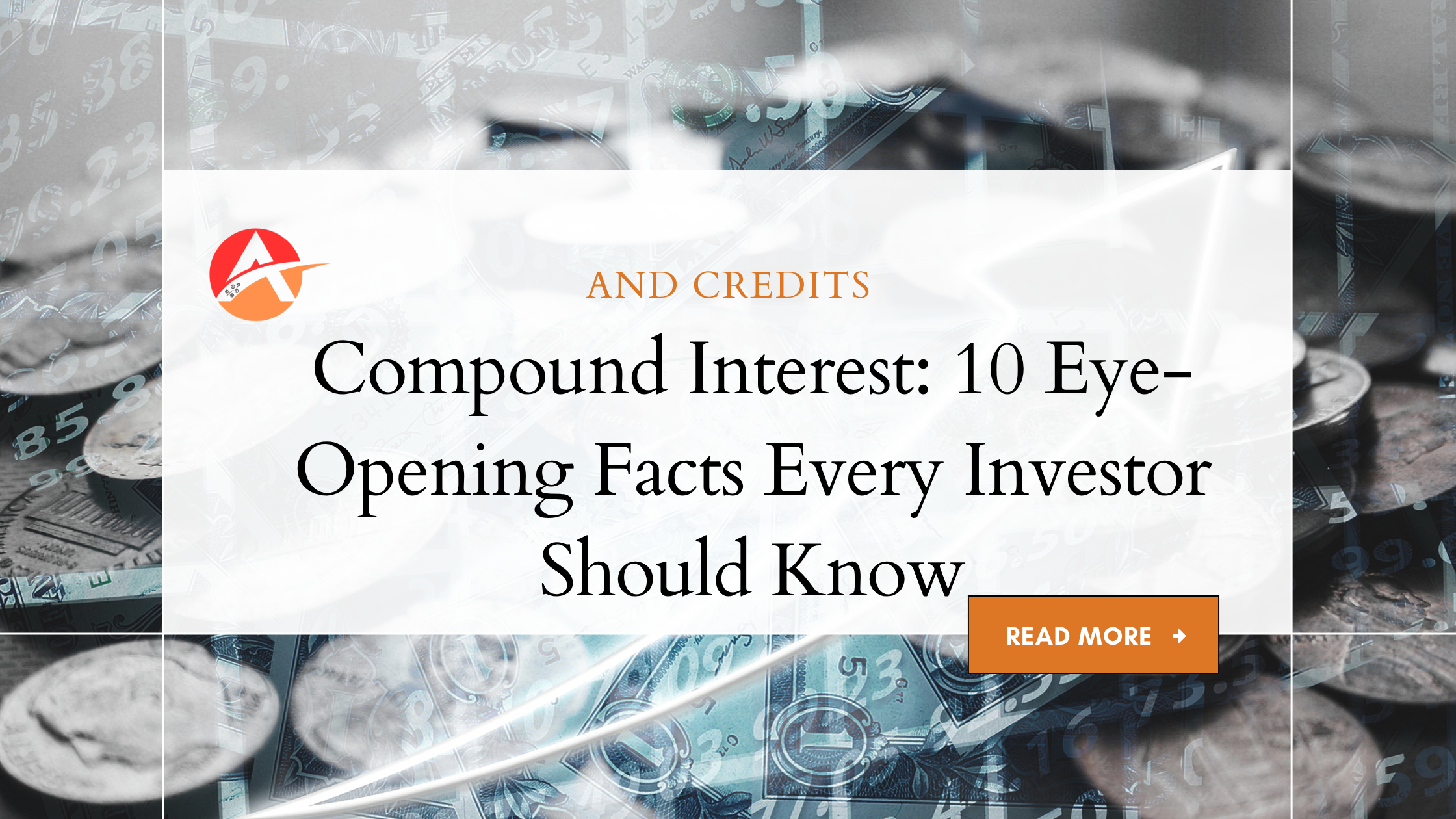Table of Contents
Introduction
If there’s one concept every investor must understand, it’s compound interest. Often called the “eighth wonder of the world,” compound interest has the power to turn modest savings into substantial wealth — all through the simple act of earning interest on your interest.
Thank you for reading this post, don't forget to subscribe!
By grasping how compound interest works, you can make smarter investing decisions, maximize your returns, and build long-term financial security. It’s not just for seasoned investors — even beginners can harness its power to grow their money over time.
In this guide, we’ll explore 10 eye-opening facts about compound-interest that every investor should know. Whether you’re just starting or looking to refine your strategy, these insights will help you put the magic of compounding to work for you.
1. What Is Compound Interest — And Why It Matters
Compound interest is when your investments earn interest on both the initial amount (principal) and the interest that accumulates over time. In other words, your money earns money — and then that money earns more.
How it differs from simple interest: Simple interest is calculated only on your original investment. Compound interest, on the other hand, builds on itself, leading to exponential growth.
Why it’s crucial for building long-term wealth: The longer your money compounds, the faster it grows — making it one of the most powerful tools for creating lasting wealth.
2. Time Is Your Best Friend When It Comes to Compound Interest
Starting early is one of the best ways to maximize compound growth. The more time your investments have to grow, the bigger the results.
Examples showing how time multiplies returns: An investor who starts at age 25 can end up with double or triple the wealth of someone who starts at 35 — even if they invest the same amount.
The cost of waiting: Every year you delay investing reduces your future earnings dramatically. Time truly is money when it comes to compound interest.
3. The Rule of 72: How to Estimate Doubling Time
The Rule of 72 is a simple way to estimate how long it will take your investment to double.
How it works: Divide 72 by your annual interest rate. The result is the number of years needed to double your money.
Example: If your investment earns 8% annually: 72 ÷ 8 = 9 years to double.
4. Small Contributions Can Lead to Massive Results
Many investors think you need large sums to build wealth — but with compound interest, small amounts add up.
The magic of regular, consistent investing: Investing $100 a month at an 8% return could grow to over $150,000 in 30 years.
Why starting small matters: The key is consistency — even modest contributions benefit greatly from compounding over time.
5. Reinvesting Dividends Accelerates Compound Growth

Reinvesting dividends — instead of spending them — fuels even faster growth.
How it works: Dividends buy more shares, which then earn more dividends and capital gains.
Why many investors prioritize dividend stocks: Dividend reinvestment can significantly boost your returns, especially over decades.
6. Compound Interest Works for You — And Against You
Just as compound interest can grow your investments, it can also grow your debts.
How debt compounds: Credit cards and loans with high interest rates will compound your debt if left unpaid — costing you far more over time.
Why managing debt matters: To build wealth, focus on earning compound interest — not paying it. Pay off high-interest debt as a priority.
7. Higher Interest Rates Fuel Faster Growth
Even small differences in interest rate can dramatically affect your long-term results.
Example: A 7% return vs. 8% may not seem huge — but over 30 years, it can result in tens of thousands more in earnings.
How to seek higher returns: Invest wisely in stocks, index funds, and other growth assets — while managing risk.
Check Out: Stock Market Investing Tips: 9 Proven Strategies to Maximize Your Profits.
8. The Earlier You Start, the Less You Need to Save
Starting young gives you a massive advantage.
Example: Investor A starts saving $200/month at age 25, Investor B starts at 35. Even if both save the same amount, Investor A can retire with nearly twice as much — thanks to compound interest.
The takeaway: Start as soon as possible — even small amounts now are worth more than large amounts later.
9. Taxes Can Erode the Power of Compounding
Taxes can eat away at your gains, reducing the power of compounding.
How tax-advantaged accounts help: Accounts like 401(k), IRA, and Roth IRA allow your investments to grow tax-free or tax-deferred — helping compounding work harder for you.
Simple tax strategies: Use tax-advantaged accounts first, invest for the long-term, and minimize unnecessary taxable events.
10. Compound Interest Turns Investors Into Millionaires

Countless millionaires didn’t get rich overnight — they built wealth slowly through compound interest.
Why patience beats market timing: Staying invested consistently outperforms trying to “time” the market. Let time and compounding do the heavy lifting.
How it builds generational wealth: A long-term strategy based on compounding can not only provide financial freedom for you — but also for your family in the future.
Conclusion
Compound interest is one of the most powerful tools for building long-term wealth — and the earlier you start, the more you’ll benefit. By understanding these 10 eye-opening facts and applying them to your financial plan, you can take full advantage of compounding to grow your money over time.
Be patient, stay consistent, and let compound interest do the work. Your future self will thank you.
For more info: Click Here.
FAQs
Q1. How often is compound interest calculated?
It depends on the account or investment. Interest can be compounded daily, monthly, quarterly, or annually — the more frequent, the better.
Q2. What is the best type of account for earning compound interest?
Tax-advantaged accounts like 401(k)s, IRAs, and Roth IRAs are ideal for compounding, as they help your money grow tax-free or tax-deferred.
Q3. How long does it take to see results from compound interest?
Compounding works best over long periods — 10, 20, or 30 years. The sooner you start, the bigger your results will be.
